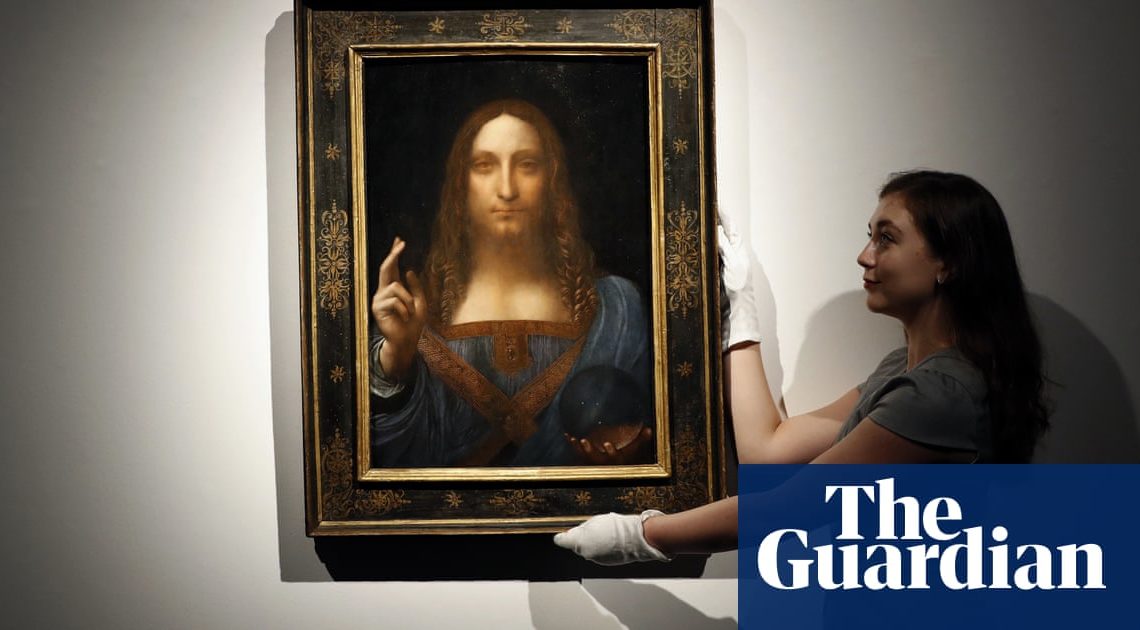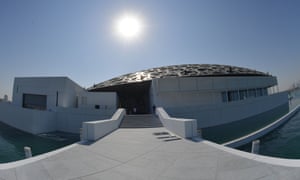
The Last Leonardo by Ben Lewis review secrets of the worlds most expensive painting
April 20, 2019How much of the famous Salvator Mundi did Leonardo paint? And where is the $450m picture now?

In November 2011, a small Renaissance painting known as the Salvator Mundi (Saviour of the World) went on show at the National Gallery. It was a compelling, moody, somewhat odd picture: a half-length figure of Christ with ringlets of auburn hair, holding a transparent crystal orb. Even more compelling was the label, describing it as a newly discovered work by Leonardo da Vinci.
This attribution, at the upper end of the art worlds Richter scale, was controversial for various reasons, not least because contrary to National Gallery policy it radically enhanced the market value of a privately owned artwork. Its owners were at this point mysterious: an American consortium was mentioned. They were, in fact, two mid-table New York dealers, Robert Simon and Alex Parish, who had bought it in 2005 on an intuitive whim, heavily overpainted and in poor condition, from a small auction house in New Orleans. They paid $1,175. Cleaned, stripped and painstakingly restored by Dianne Modestini, authenticated by distinguished Leonardo experts such as Martin Kemp and David A Brown, and launched with the imprimatur of the National Gallery, the Salvator Mundi had arrived. After five centuries of obscurity it was an international celebrity, a fairytale frog turned into a prince of paintings.
In 2013 Simon and Parish sold the picture for $80m to a Swiss middleman, who promptly resold it to a Russian oligarch, Dmitry Rybolovlev, for $127.5m. These were private sales, but when Rybolovlev in turn decided to sell, it was in the full theatrical spotlight of a public auction at the Christies New York saleroom in the Rockefeller Center. On the evening of 15 November 2017, the auctioneer opened the bidding on Lot 9b, which he billed as the masterpiece by Leonardo of Christ the Saviour. After a couple of minutes it reached $180m, breaking the previous record for a painting sold at auction, set in 2015 by Picassos Women of Algiers. For a while there were five bidders in the game all anonymous, though all doubtless classifiable, in the unlovely terminology of high-end art-dealing, as UHNWIs (ultra-high-net-worth individuals) but for the last 10 minutes there were just two slugging it out. The final price tag was $450m, which included Christies commission of $50m. The buyer was a minor Saudi royal, Prince Badr bin Abdullah al Saud. He is widely rumoured to have been a proxy for Crown Prince Mohammed bin Salman, though the immediate beneficiary was the new Louvre Abu Dhabi, for whom (according to official Saudi sources) he was acting as an intermediary purchaser of the painting.

The story of the worlds most expensive painting is narrated with great gusto and formidably researched detail in Ben Lewiss book. He has talked to just about everybody involved, even the publicity-shy Rybolovlev, whom he describes as a textbook oligarch with the blank air of the billionaire. The book is timed well, as celebrations gear up for the 500th anniversary of Leonardos death on 2 May. Lewis has a background in arts journalism and documentary films: snappy reportage of mega-buck deals is his element. But to his credit, much of the book is in a rather different mode of patient historical investigation. He examines the chequered career of the painting from its inception probably in Milan, sometime around 1507-10 which leads him into areas where lurk many more questions than answers.
His investigation of the provenance of the Salvator Mundi casts considerable doubt on claims that it was once in the collection of Charles I, and that it is listed in an inventory of 1650 as a peece [picture] of Christ done by Leonard. This idea was advanced in the National Gallery and Christies catalogues to indicate that the painting was traditionally known and valued as a Leonardo. The question of provenance is complicated by the existence of several other paintings with the Salvator iconography, some very plausibly attributed to pupils and imitators of Leonardo. One of these, in the Pushkin Museum in Moscow, was definitely in the royal collection, as it bears the stamp CR (Carolus Rex) on the back of the panel. This painting, attributed to Giampietrino, may well be the peece itemised in 1650.
The first certain sighting of the Salvator Mundi is not until 1900, when it was purchased by a wealthy textile manufacturer, Sir Francis Cook. It hung in the Cook family house in Richmond until 1958, and was then sold at Sothebys to an American businessman, Warren Kuntz, for 45, a sum so low, it suggests he was the only bidder. Kuntz and his wife Minnie lived in New Orleans, which is where the painting was later spotted on a sale room website by the speculative eye of Alex Parish.
Lewiss probings of the Salvators backstory raise questions about its historical status and visibility, and these lead in turn to the fundamental question of whether the painting is really an autograph work by Leonardo. Eight years after its appearance at the National Gallery, the consensus among Leonardo scholars is probably weighted against the attribution, though the matter is not one amenable to a straight yes or no answer. The working practice of a Renaissance Italian studio was collective. The maestro was its central figure, but others assistants, apprentices, specialists collaborated in its products. Some clients stipulated the extent of the maestros contribution to a painting: they were prepared to pay more for his brushwork. Others with a smaller budget just wanted the Leonardo look and were happy with a well-executed copy. A visitor to his studio in 1501 reports: Two of his assistants make copies, and he from time to time adds some touches to them.
Some red chalk sketches of sleeve draperies, found in the Royal Collection at Windsor, are certainly by Leonardo. They are similar, though not identical, to the sleeves in the painting, and even if they were identical they would not tell us whose paintbrush copied them on to the walnut-wood panel of Salvator Mundi.

These workshop practices are an essential context. The pertinent question is not Is it by Leonardo? but How much of it is by Leonardo? In 2012, Carmen Bambach argued: Much of the original painting surface may be by Boltraffio one of Leonardos most brilliant Milanese assistants but with passages done by Leonardo himself. She identifies the hands and the crystal orb as Leonardos. In the latest edition of his catalogue raisonn of Leonardos works, Frank Zollner describes the Salvator as a high-quality product of Leonardos workshop based on a design by him. In an article in the German magazine Monopol he identified the question that underlies the attribution debate. It is about money, he writes. A good workshop painting would fetch an estimated $20m. His article appeared the day before the painting, heavily hyped as by Leonardo, sold in New York for 20 times that sum.
None of the earlier experts who saw the painting in Richmond had any inkling it was by Leonardo. Tancred Borenius, who catalogued the Cook collection in 1913, described it as a free copy after Boltraffio two degrees of separation from Leonardo while another cataloguer identified it only as Milanese school of circa 1520. This is perhaps not surprising, as the painting is atypical it is Leonardos only solo portrayal of the adult Christ, and its full-frontal posture is quite different from the three-quarter profiles and fluid contrapposto of his secular portraits.
Lewis sums up the story of the Salvator Mundi as a narrative with too many plot holes the provenance is speculative, the attribution optimistic, the restoration extensive and the price exorbitant. A potpourri of vested interests has combined to turn a workshop painting into a Leonardo. But he remains even-handed: grateful for the paintings survival, admiring of Simon and Parishs chutzpah, and defensive of Modestini, whose restoration has been criticised for Leonardising the vestigial remains of the original. The painting, he says, is a Leonardo for our time, a post-truth Leonardo.
There is one last plot hole that is giving those involved in this tangled affair some cause for concern. The Salvator Mundi has temporarily, at least disappeared. Three weeks after the auction sale, Abu Dhabis Department of Culture tweeted: Da Vincis Salvator Mundi is coming to #LouvreAbuDhabi. The gallerys website gushed: Lost and hidden for so long [the] masterpiece is now our gift to the world. Then in September last year, two weeks before the scheduled unveiling of the painting in its new home, the event was abruptly cancelled. A press release promised further information, but none has been forthcoming an unexpected chapter of silence, which the ghost of Leonardo might just be enjoying.
Charles Nicholls Leonardo Da Vinci is published by Penguin. The Last Leonardo is published by William Collins (20). To order a copy go to guardianbookshop.com or call 0330 333 6846. Free UK p&p over 15, online orders only. Phone orders min p&p of 1.99.
Read more: http://www.theguardian.com/us

